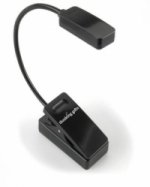
Livrare
Consilier de cumpărături





Nu se pretează? Nu contează! La noi puteți returna bunurile în 30 de zile
 Voucher cadou
orice valoare
Voucher cadou
orice valoare
Cu un voucher cadou nu veți da greș. În schimbul voucherului, destinatarul își poate alege orice din oferta noastră.
Cell Motility
 engleză
engleză
 488 b
488 b
30 de zile pentru retur bunuri
Ar putea de asemenea, să te intereseze


Cell motility is a fascinating example of cell behavior which is fundamentally important to a number of biological and pathological processes. It is based on a complex self-organized mechano-chemical machine consisting of cytoskeletal filaments and molecular motors. This network is highly dynamic, but able to show precise spatial and temporal organization. The machine is regulated by a complex network of biochemical reactions coupled to force and movement generating processes.§In general, the cytoskeleton is responsible for the movement of the entire cell and for movements within the cell. There are two ways by which cells can move: swimming (i.e. movement through liquid water) and crawling (i.e. movement across a rigid surface). Swimming cells experience viscous forces that are orders of magnitude greater than inertial forces. Therefore, swimming cells undergo an non-symmetric (i.e. non-reciprocal) sequence of shape changes. While for many bacterial cells motion is caused by the rotation of flagella, most swimming eukaryotic cells use the beating of hairlike extensions (such as cilia) to propel themselves through the liquid. The movement of cells across rigid surfaces is even more complex. Here, one has to distinguish between crawling and gliding. In crawling motility, a cell (attached to a rigid substrate) extends forward a projection at its leading edge that then attaches to the substrate. There are 3 types of projections (filopodia, lamellipodia and pseudopodia) which are all filled with assemblies of cytoskeletal actin filaments. After protrusion and attachment, the crawling cell then contracts to move the cell body forward, and movement continues as a tread-milling cycle of front protrusion and rear retraction. Gliding cells slide across a rigid substrate by various mechanisms. The most important examples include jet propulsion, twitching, and dynamic organization of the pellicle (i.e. the skin of the cell).§Of biological importance are not only the movements of the cell as whole but also movements within the cell boundaries. For example, during mitosis the replicated chromosomes are cleaved and pulled to opposite poles of the cell by the mitotic spindle. Not only chromosomes, but also many other large molecules must be moved to specific locations within the cell. This can be achieved with active transport by molecular motors which move along cytoskeletal filaments. This motion is much more precise and quicker than diffusional motion. Motor proteins are essential for many processes of cellular motion. There is a whole variety of different motors. The most important classes include: linear motors (such as myosin, kinesin and dynein), rotatory motors (such as ATP synthase and bacterial flagella), and nucleic acid motors (such as helicases and topoisomerases). The linear motors use ATP to move along filaments. But they are much more than simple transporters. Two headed motors attach to adjacent filaments leading to sliding of oppositely oriented filaments (which is responsible for, e.g., muscle contraction). These induced interactions give rise to a complex cooperative behavior of collections of motors allowing cells to actively deform their shape.§On the other hand, single motors can exhibit more complex shape changes. For example, ATPsynthase (the motor which produces ATP) performs a rotational motion. While the biological function of the fluid flow generated by this motor is so far not understood, other rotatory motors enable bacteria to swim. For example, the flagellum of E.coli uses an ion flux to drive its rotation.A much-needed work that provides an authoritative overview of the fundamental biological facts, theoretical models, and current experimental developments in this fascinating area. Cell motility is fundamentally important to a number of biological and pathological processes. The main challenge in the field of cell motility is to develop a complete physical description on how and why cells move. For this purpose new ways of modeling the properties of biological cells have to be found and this volume is a major stepping-stone along the way.Cell motility is a fascinating example of cell behavior which is fundamentally important to a number of biological and pathological processes. It is based on a complex self-organized mechano-chemical machine consisting of cytoskeletal filaments and molecular motors. In general, the cytoskeleton is responsible for the movement of the entire cell and for movements within the cell. The main challenge in the field of cell motility is to develop a complete physical description on how and why cells move. For this purpose new ways of modeling the properties of biological cells have to be found. This long term goal can only be achieved if new experimental techniques are developed to extract physical information from these living systems and if theoretical models are found which bridge the gap between molecular and mesoscopic length scales. Cell Motility gives an authoritative overview of the fundamental biological facts, theoretical models, and current experimental developments in this fascinating area.
Informații despre carte
 engleză
engleză
Categorii




 Cum să cumpăr
Cum să cumpăr

































